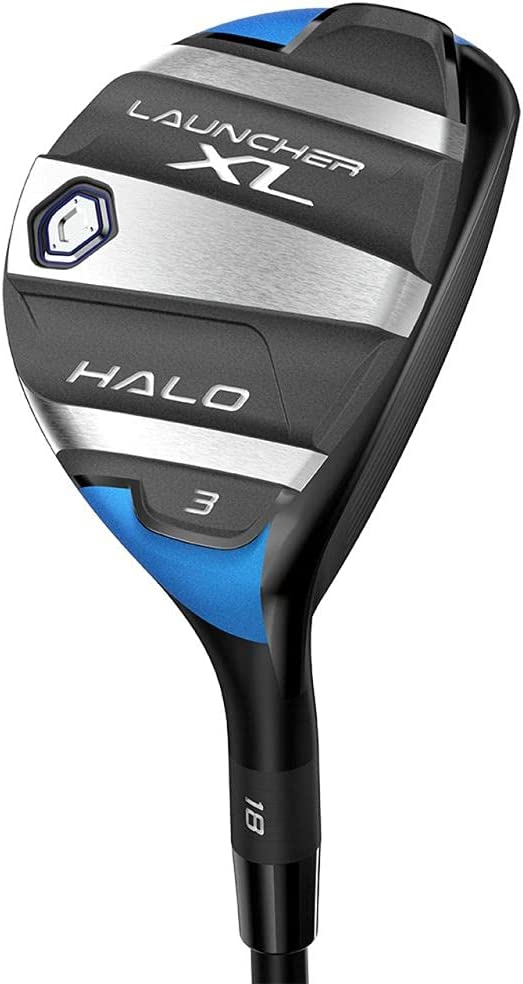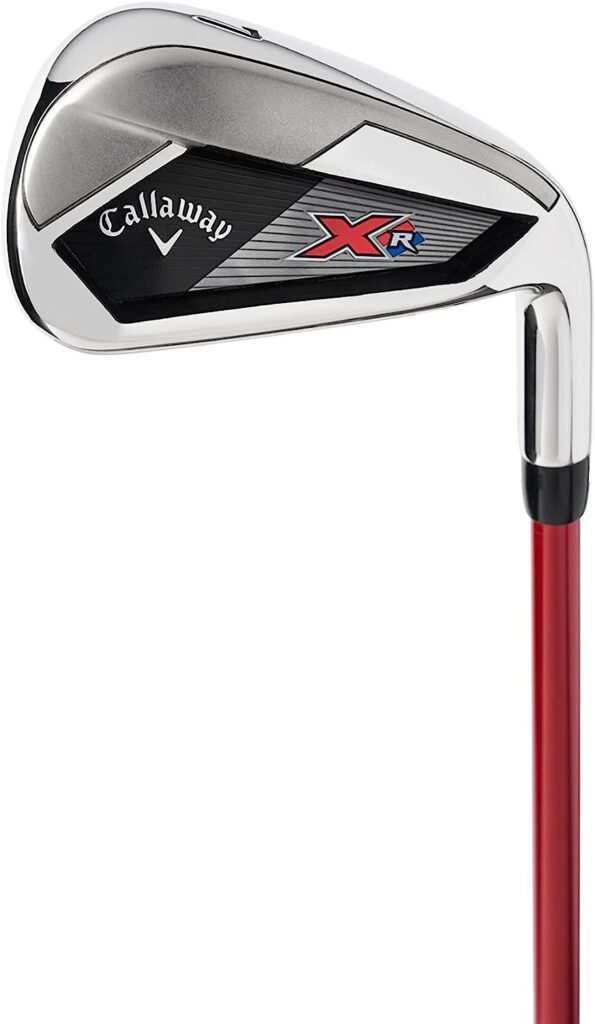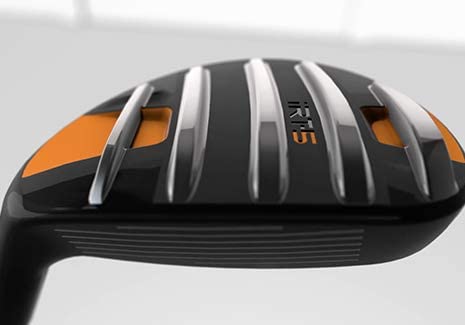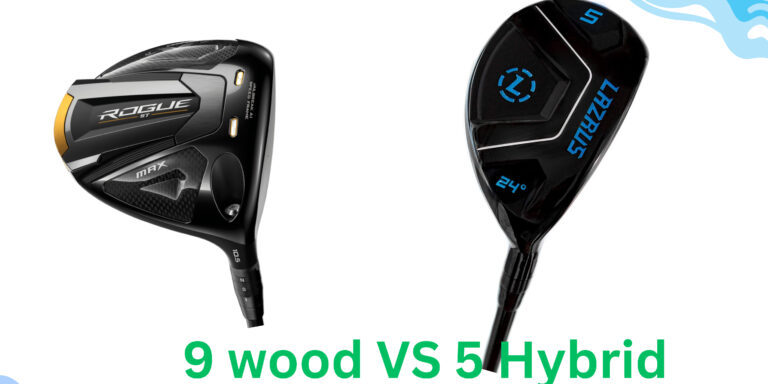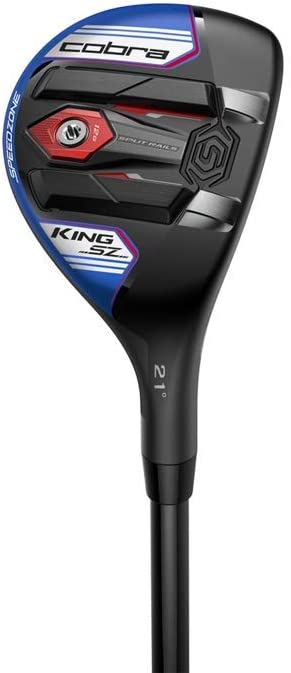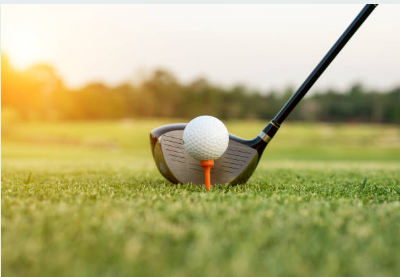When to Use a Hybrid Golf Club
Hybrid golf clubs have become increasingly popular among golfers of all skill levels. These clubs are designed to combine the best features of both irons and woods, making them a versatile option for a variety of shots on the course. However, many golfers are unsure of when to use a hybrid golf club and how to best incorporate them into their game.
One of the main benefits of using a hybrid club is that they are easier to hit than long irons and can be used in a variety of situations on the course.
According to TGW, a low-lofted hybrid between 14° to 17° is ideal for replacing a 3-wood or 5-wood, while a moderate-lofted hybrid between 18° to 22° can replace a 5-wood or 7-wood, as well as a 3- or 4-iron. They can be used off the tee, in the fairway, rough, and even sand traps, making them a versatile club to have in the bag.
However, it’s important to note that while hybrids are designed to be easier to hit than long irons, they do require some adjustment in your swing technique. As USGolfTV notes, hybrid swing mechanics are similar to irons, but there are some differences to be aware of.
For example, hybrids have a flatter sole and a lie angle similar to irons, so golfers should focus on making a sweeping motion through the ball rather than hitting down on it like they would with a fairway wood.
By understanding when to use a hybrid club and how to best incorporate them into their game, golfers can take advantage of their versatility and improve their overall performance on the course.
Understanding Hybrid Golf Clubs
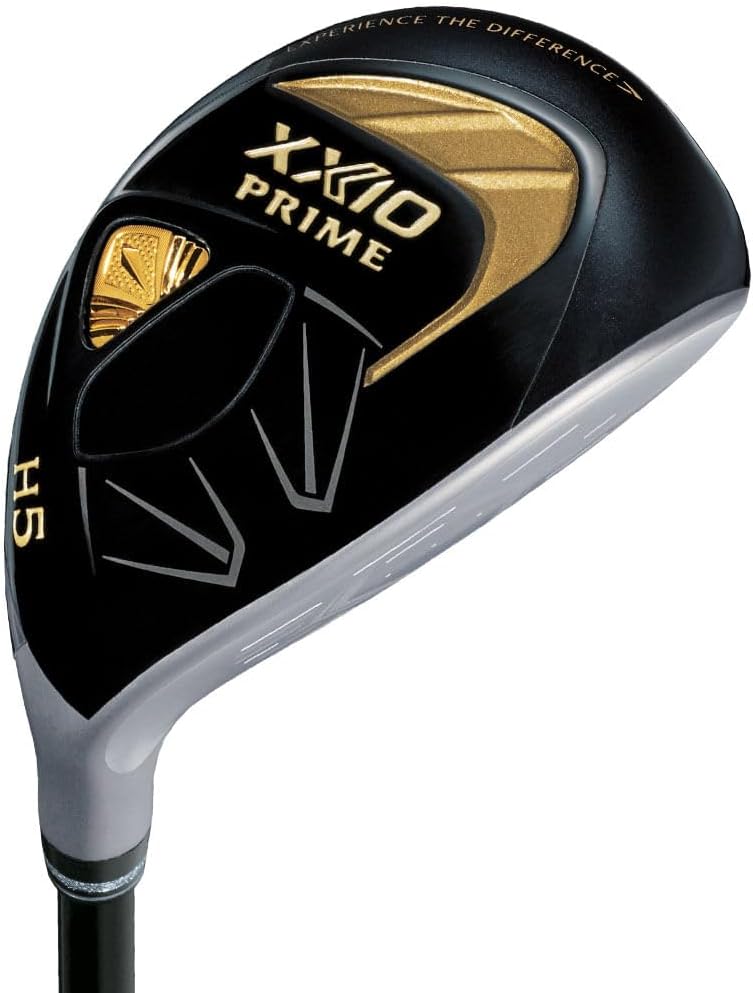
Hybrid golf clubs, also known as utility clubs, are a cross between a fairway wood and an iron. They were designed to replace traditional long irons, which can be difficult to hit for many golfers. The hybrid club has a larger head and a shorter shaft than a fairway wood, making it easier to control and hit accurately.
The design of a hybrid club typically includes a hollow steel or titanium head with a slightly convex face, similar to that of a fairway wood. This shape provides forgiveness and helps to launch the ball higher and farther than a traditional long iron.
Hybrids are versatile clubs that can be used in a variety of situations on the golf course. They are particularly useful for shots from the rough or fairway, as well as for approach shots to the green. They can also be used off the tee on shorter par-4s or par-3s.
One of the main benefits of using a hybrid club is that it allows golfers to hit longer shots with more accuracy and consistency. The larger clubhead and shorter shaft make it easier to get the ball in the air and keep it on target. Additionally, the design of the clubhead allows for more forgiveness on off-center hits.
Overall, hybrid golf clubs are a valuable addition to any golfer’s bag. They offer a combination of the best features of fairway woods and long irons, making them a versatile and reliable option for a variety of shots on the golf course.
When to Use a Hybrid Golf Club
Hybrid golf clubs have become increasingly popular among golfers of all skill levels. These versatile clubs combine the best features of both irons and woods, making them ideal for a wide range of shots. Here are some situations where golfers might want to consider using a hybrid club:
Long Shots
Hybrids are great for long shots that require distance and accuracy. They can be used off the tee on shorter par 4s and 5s, and can also be used to reach longer par 3s. Because of their wider sole and lower center of gravity, hybrids can help golfers get the ball in the air and achieve a higher trajectory, which can result in more distance.
Recovery Shots
Hybrids are also useful for recovery shots. When a golfer finds themselves in trouble, such as in the rough or behind a tree, a hybrid can help them get back on track. The wider sole of the club can help the ball glide through the grass more easily, while the hybrid’s loft can help the ball get up in the air and back onto the fairway.
Tee Shots
Finally, hybrids can be a great option for tee shots on longer par 3s or shorter par 4s. Because hybrids are easier to hit than long irons, golfers can use them to achieve greater distance and accuracy off the tee. This can be especially helpful for golfers who struggle with consistency when using long irons.
Overall, hybrids are a versatile club that can be used in a variety of situations on the golf course. Whether a golfer is looking for distance, accuracy, or a way to recover from a difficult shot, a hybrid can be a valuable addition to their bag.
Benefits of Using a Hybrid Club
Hybrid golf clubs have become increasingly popular among golfers of all levels due to their versatility and ease of use. They offer a number of benefits that make them a valuable addition to any golfer’s bag.
Versatility
One of the biggest benefits of using a hybrid club is its versatility. Hybrid clubs can be used from a variety of lies, including the fairway, rough, and even sand traps. This versatility makes them a great option for golfers who want to simplify their game and reduce the number of clubs in their bag.
Hybrids are also effective on a variety of shots, from long approach shots to chip shots around the green. They can be used to hit high, soft shots that land softly on the green or low, penetrating shots that roll out on the fairway. This versatility gives golfers more options on the course and can help them save strokes.
Ease of Use
Another benefit of using a hybrid club is its ease of use. Hybrids are designed to be more forgiving than long irons, which can be difficult to hit consistently. They have a larger sweet spot and a lower center of gravity, which makes them easier to launch into the air.
Hybrids also have a shorter shaft length than fairway woods, which makes them easier to control. This shorter length allows golfers to make a more compact swing, which can help them make better contact with the ball and hit more accurate shots.
Greater Distance
Finally, using a hybrid club can help golfers hit the ball farther. Hybrids are designed to launch the ball higher and with more spin than long irons, which can help the ball carry farther through the air. They also have a lower center of gravity than fairway woods, which can help golfers hit the ball higher and with more distance.
Overall, using a hybrid club can provide golfers with a number of benefits that can help them improve their game. From versatility to ease of use to greater distance, hybrids are a valuable addition to any golfer’s bag.
Choosing the Right Hybrid Club
When it comes to choosing the right hybrid club, there are a few factors to consider. In this section, we’ll discuss loft selection, club length, and brand consideration.
Loft Selection
One of the most important factors to consider when choosing a hybrid club is the loft. The loft of the club will determine how high the ball will fly and how far it will travel. Generally, the higher the loft, the easier it is to get the ball in the air and the shorter the distance it will travel. Conversely, the lower the loft, the harder it is to get the ball in the air, but the farther it will travel.
When selecting the loft of your hybrid club, consider the loft of the iron you are replacing. For example, if you are replacing a 4-iron, a hybrid with a loft of around 22-24 degrees would be a good choice.
Club Length
Another important factor to consider when choosing a hybrid club is the length of the club. The length of the club will determine how far you can hit the ball and how accurate you can be. Generally, longer clubs will hit the ball farther, but they can be harder to control. Conversely, shorter clubs will be more accurate, but they won’t hit the ball as far.
When selecting the length of your hybrid club, consider your height, swing speed, and the distance you want to hit the ball. If you are taller or have a faster swing speed, you may want to consider a longer club. Conversely, if you are shorter or have a slower swing speed, you may want to consider a shorter club.
Brand Consideration
Finally, when choosing a hybrid club, you should also consider the brand. Different brands offer different features and benefits, so it’s important to do your research and choose a brand that fits your needs and preferences.
Some of the most popular brands of hybrid clubs include Callaway, TaylorMade, Cobra, and Titleist. Each of these brands offers a variety of hybrid clubs with different features and benefits, so be sure to research each one and choose the one that best fits your needs.
In summary, when choosing a hybrid club, consider the loft, club length, and brand. By taking these factors into account, you can choose a hybrid club that will help you improve your game and lower your scores.
Common Mistakes When Using Hybrid Clubs

When it comes to using hybrid clubs, there are a few common mistakes that golfers make. These mistakes can result in poor shots, frustration, and a lack of confidence in using the club. In this section, we will discuss two common mistakes and how to avoid them.
Incorrect Swing
One of the most common mistakes that golfers make when using hybrid clubs is an incorrect swing. Many golfers try to swing the hybrid club like an iron, which can lead to poor shots. Hybrid clubs have a different design than irons, and they require a different swing.
To avoid this mistake, golfers should focus on making a sweeping motion with the hybrid club. The club should be swung more like a fairway wood than an iron. Golfers should also focus on making a smooth, controlled swing, rather than trying to hit the ball with all their strength.
Wrong Ball Position
Another common mistake that golfers make when using hybrid clubs is placing the ball in the wrong position in their stance. Some golfers place the ball too far forward in their stance, while others place it too far back. Both of these mistakes can lead to poor shots.
To avoid this mistake, golfers should focus on placing the ball in the center of their stance. This will help ensure that the club makes contact with the ball at the correct angle. Golfers should also experiment with their ball position to find the position that works best for them.
In summary, golfers should focus on making a sweeping motion with the hybrid club and placing the ball in the center of their stance to avoid common mistakes when using hybrid clubs. By avoiding these mistakes, golfers can improve their shots and gain confidence in using the hybrid club on the golf course.
Club Selection Strategies
Another factor that influences your club selection is your strategy. Strategy refers to your plan and approach to playing each hole, as well as your goals and expectations for your game. Strategy affects how you choose your club for each shot, as well as how you execute your shot and react to the outcome.
Hybrid golf clubs can help you develop and implement a strategic approach to club selection, but they may also require some flexibility and creativity.
One aspect of strategy that affects hybrid club usage is the risk-reward analysis. Risk-reward analysis refers to the evaluation of the potential benefits and costs of each shot, as well as the probability of success and failure. Some shots are low-risk and low-reward, while others are high-risk and high-reward. Some shots are more likely to succeed than fail, while others are more likely to fail than succeed.
Generally, hybrid clubs are more suitable for shots that are high-risk and high-reward than shots that are low-risk and low-reward. This is because hybrid clubs have more loft than woods and less loft than irons, which means they can help you hit shots that challenge your limits or exploit your opportunities.
Hybrid clubs can help you go for the green in two on a par 5, cut the corner on a dogleg, or hit over a water hazard. However, hybrid clubs may not be as effective for shots that are low-risk and low-reward. This is because hybrid clubs have less spin than irons and more spin than woods, which means they may not help you hit shots that play it safe or avoid trouble.
Hybrid clubs may not help you lay up on a par 5, hit the middle of the fairway, or hit short of a bunker.
To determine the optimal risk-reward analysis for hybrid club usage, you need to know your strengths and weaknesses, as well as the opportunities and threats on each hole. This requires some self-awareness and course management skills, as well as some confidence and courage.
You need to assess your abilities and limitations with each club in your set, as well as the features and challenges of each hole. You also need to weigh the pros and cons of each shot option, as well as the chances of success and failure.
Once you have this information, you can decide whether to use a hybrid club or not depending on the situation. For example, if you are confident in your hybrid club skills and face a hole that offers a high-reward opportunity, you may want to use a hybrid club to take advantage of it.
If you are not confident in your hybrid club skills or face a hole that poses a high-risk threat, you may want to avoid using a hybrid club and opt for a safer alternative.
Another aspect of strategy that affects hybrid club usage is the shot shape preference. Shot shape preference refers to the type and direction of curve you want to impart on your ball flight, such as a draw, fade, hook, or slice. Some golfers prefer to hit straight shots, while others prefer to hit curved shots.
Some golfers prefer to hit shots that curve from right to left (for right-handed golfers), while others prefer to hit shots that curve from left to right (for right-handed golfers).
Generally, hybrid clubs are more suitable for golfers who prefer to hit straight shots or shots that curve from right to left than golfers who prefer to hit shots that curve from left to right. This is because hybrid clubs have more loft than woods and less loft than irons, which means they reduce sidespin and slice.
Hybrid clubs can help you hit shots that fly straighter and more stable than irons or woods. Hybrid clubs can also help you hit shots that draw slightly or hook sharply depending on your swing path and face angle. However, hybrid clubs may not be as effective for golfers who prefer to hit shots that curve from left to right.
This is because hybrid clubs have less spin than irons and more spin than woods, which means they may not help you hit shots that fade gently or slice severely depending on your swing path and face angle.
To determine the optimal shot shape preference for hybrid club usage, you need to know your natural ball flight tendency and your desired ball flight outcome with each club in your set. This requires some practice and feedback on the range or the course.
You need to observe how your ball behaves in the air with each club, as well as how it reacts on the ground. You also need to adjust your swing path and face angle accordingly to achieve your preferred shot shape.
Once you have this knowledge, you can decide whether to use a hybrid club or not depending on the situation. For example, if you naturally hit straight shots or draw shots with your hybrid club and face a hole that suits this ball flight pattern, you may want to use a hybrid club to match it.
If you naturally hit fade shots or slice shots with your hybrid club or face a hole that requires this ball flight pattern, you may want to avoid using a hybrid club and choose a different option.
As you can see, hybrid golf clubs can help you develop and implement a strategic approach to club selection, but they may also require some flexibility and creativity. In the next section, we will compare hybrid clubs with long irons and fairway woods, and see when hybrid clubs outperform them.
Hybrid Clubs vs. Long Irons and Fairway Woods
Another factor that influences your club selection is the club comparison. Club comparison refers to how hybrid clubs compare with other types of clubs in terms of performance, advantages, and disadvantages.
In this section, we will focus on comparing hybrid clubs with long irons and fairway woods, as these are the most common alternatives to hybrid clubs in your club set. We will highlight the strengths and weaknesses of each club type, and offer insights on when hybrid clubs outperform long irons and fairway woods.
Long irons are irons with low lofts and long shafts, typically ranging from 2-iron to 5-iron. Long irons are designed to hit the ball far and low, with a lot of spin and precision. Long irons are ideal for hitting accurate tee shots on par 3s, approach shots on par 4s, or punch shots under trees.
However, long irons are also difficult to hit and unforgiving, as they require a lot of speed, accuracy, and consistency. Long irons have a small head and a high center of gravity, which makes them hard to hit and launch high. Long irons also have a lot of spin, which makes them prone to sidespin and slice.
Hybrid clubs are superior to long irons in many ways, but they also have some drawbacks and limitations. Here are some of the pros and cons of hybrid clubs vs. long irons:
Pros:
- Hybrid clubs are easier to hit and more forgiving than long irons, as they have a larger head and a lower center of gravity, which makes them easier to hit and launch high.
- Hybrid clubs are longer and higher-flying than long irons, as they have more loft than woods and less loft than irons, which makes them launch the ball higher and farther.
- Hybrid clubs are more versatile and adaptable than long irons, as they can cope with various course conditions, such as tight lies, thick roughs, or deep bunkers.
Cons:
- Hybrid clubs are less precise and consistent than long irons, as they have less spin than irons and more spin than woods, which makes them less stable and predictable in the air.
- Hybrid clubs are less controllable and adjustable than long irons, as they have a shorter shaft than woods and more loft than irons, which makes them harder to shape or manipulate.
- Hybrid clubs are less feedback-giving and responsive than long irons, as they have a larger head than irons and a lower center of gravity than woods, which makes them less sensitive and communicative.
Fairway woods are woods with high lofts and long shafts, typically ranging from 3-wood to 7-wood. Fairway woods are designed to hit the ball far and high, with a lot of carry and roll. Fairway woods are ideal for hitting long drives on par 5s, second shots on par 5s, or recovery shots from fairways or light roughs.
However, fairway woods are also challenging to hit and control, as they require a lot of speed, accuracy, and consistency. Fairway woods have a large head and a low center of gravity, which makes them easy to hit but hard to launch low. Fairway woods also have a lot of loft, which makes them prone to backspin and hook.
Hybrid clubs are superior to fairway woods in many ways, but they also have some drawbacks and limitations. Here are some of the pros and cons of hybrid clubs vs. fairway woods:
Pros:
- Hybrid clubs are easier to hit and more forgiving than fairway woods, as they have a larger head than irons and a lower center of gravity than woods, which makes them easier to hit and launch high.
- Hybrid clubs are more accurate and stable than fairway woods, as they have less loft than woods and more loft than irons, which makes them reduce sidespin and slice.
- Hybrid clubs are more versatile and adaptable than fairway woods, as they can cope with various course conditions, such as tight lies, thick roughs, or deep bunkers.
Cons:
- Hybrid clubs are shorter and lower-flying than fairway woods, as they have more loft than woods and less loft than irons, which makes them launch the ball lower and shorter.
- Hybrid clubs are less powerful and penetrating than fairway woods, as they have less loft than woods and more loft than irons, which makes them produce less carry and roll.
- Hybrid clubs are less feedback-giving and responsive than fairway woods, as they have a larger head than irons and a lower center of gravity than woods, which makes them less sensitive and communicative.
As you can see, hybrid clubs have many advantages over long irons and fairway woods in terms of performance, but they also have some disadvantages and limitations. In the next section, we will explore proper techniques and setup for using hybrid clubs and achieving maximum performance with them.
Techniques for Using Hybrid Clubs
Another factor that influences your club selection is your technique. Technique refers to how you set up and swing the club, as well as how you adjust to the unique characteristics of each club.
Technique affects how you hit the ball, as well as how your ball behaves on the ground and in the air. Hybrid golf clubs require proper techniques and setup to use them effectively, but they may also require some adjustments and modifications.
One aspect of technique that affects hybrid club usage is the setup. Setup refers to how you position yourself and the ball before you swing the club, such as your stance, alignment, grip, posture, etc. Your setup affects how you swing the club, as well as how you strike the ball and launch it. Hybrid golf clubs require a similar setup to irons or woods, but they may also require some tweaks and variations.
Generally, hybrid clubs require a setup that is closer to irons than woods, but not exactly the same as either of them. Here are some of the key elements of a hybrid club setup:
Stance: Your stance should be slightly wider than your shoulders, similar to an iron stance. This will give you more balance and stability for your swing.
Alignment: Your alignment should be parallel to your target line, similar to an iron or wood alignment. This will help you aim and hit the ball straight.
Grip: Your grip should be neutral or slightly strong, similar to an iron or wood grip. This will help you control and release the club properly.
Posture: Your posture should be relaxed and athletic, similar to an iron or wood posture. This will help you rotate and transfer your weight smoothly.
Ball position: Your ball position should be slightly forward of center, between your iron and wood ball positions. This will help you hit the ball on a slightly ascending blow and launch it high.
Weight distribution: Your weight distribution should be slightly favoring your front foot, similar to an iron weight distribution. This will help you hit down on the ball and create more spin.
Shaft lean: Your shaft lean should be slightly forward of vertical, similar to an iron shaft lean. This will help you de-loft the club and create more distance.
Another aspect of technique that affects hybrid club usage is the swing. Swing refers to how you move and rotate the club during your shot, such as your takeaway, backswing, downswing, impact, follow-through, etc. Your swing affects how you hit the ball, as well as how your ball behaves on the ground and in the air. Hybrid golf clubs require a similar swing to irons or woods, but they may also require some tweaks and variations.
Generally, hybrid clubs require a swing that is closer to irons than woods, but not exactly the same as either of them. Here are some of the key elements of a hybrid club swing:
Takeaway: Your takeaway should be smooth and low, similar to an iron or wood takeaway. This will help you create a wide and shallow arc for your swing.
Backswing: Your backswing should be full and high, similar to an iron or wood backswing. This will help you generate more power and speed for your swing.
Downswing: Your downswing should be fast and steep, similar to an iron downswing. This will help you hit the ball with more force and spin.
Impact: Your impact should be solid and square, similar to an iron or wood impact. This will help you strike the ball with more accuracy and consistency.
Follow-through: Your follow-through should be long and high, similar to an iron or wood follow-through. This will help you finish your swing with more balance and control.
As you can see, hybrid golf clubs require proper techniques and setup to use them effectively, but they may also require some adjustments and modifications. In the next section, we will examine case studies of professional golfers who use hybrid clubs and analyze their impact on their game.
Case Studies of Professional Golfers
Another factor that influences your club selection is your inspiration. Inspiration refers to the examples and models that you look up to and learn from, such as professional golfers who use hybrid clubs.
Inspiration affects how you choose your club for each shot, as well as how you execute your shot and react to the outcome. Hybrid golf clubs are used by many professional golfers who have achieved success and recognition with them, but they may also have different reasons and methods for using them.
In this section, we will examine case studies of professional golfers who use hybrid clubs and analyze their impact on their game. We will look at their backgrounds, motivations, preferences, and results with hybrid clubs, and draw lessons and insights from their experiences. Here are some of the professional golfers who use hybrid clubs:
Tiger Woods: Tiger Woods is one of the greatest golfers of all time, with 15 major championships and 82 PGA Tour wins. He is known for his power, accuracy, and creativity on the course. He started using hybrid clubs in 2009, after recovering from a knee surgery that affected his swing speed and distance.
He used a 19-degree Nike SQ Dymo hybrid to replace his 2-iron or 5-wood, depending on the course conditions. He used the hybrid club to hit high and soft shots that landed softly on the greens, as well as low and penetrating shots that ran far on the fairways.
He also used the hybrid club to hit shots from difficult lies or roughs, where irons or woods would not perform well. He won several tournaments with the hybrid club in his bag, including the 2019 Masters.
Phil Mickelson: Phil Mickelson is one of the most popular and successful golfers of his generation, with six major championships and 45 PGA Tour wins. He is known for his left-handed swing, short game, and risk-taking style.
He started using hybrid clubs in 2004, after struggling with hitting long irons or fairway woods consistently. He used a 17-degree Callaway X Hot Pro hybrid to replace his 2-iron or 4-wood, depending on the course conditions. He used the hybrid club to hit high and long shots that carried over hazards or reached par 5s in two shots, as well as low and curved shots that navigated doglegs or avoided trouble.
He also used the hybrid club to hit shots from tight lies, roughs, or bunkers, where irons or woods would not perform well. He won several tournaments with the hybrid club in his bag, including the 2013 Open Championship.
Lydia Ko: Lydia Ko is one of the youngest and most talented golfers in the history of women’s golf, with two major championships and 16 LPGA Tour wins. She is known for her consistency, accuracy, and maturity on the course.
She started using hybrid clubs when she was a teenager, after finding them easier to hit and more forgiving than long irons or fairway woods. She used a 19-degree Callaway Apex hybrid to replace her 4-iron or 7-wood, depending on the course conditions. She used the hybrid club to hit high and straight shots that landed softly on the greens, as well as low and controlled shots that rolled far on the fairways.
She also used the hybrid club to hit shots from various lies and terrains, where irons or woods would not perform well. She won several tournaments with the hybrid club in her bag, including the 2015 Evian Championship.
As you can see, hybrid golf clubs are used by many professional golfers who have achieved success and recognition with them, but they may also have different reasons and methods for using them. In the next section, we will debunk some common myths and misconceptions about hybrid golf clubs.
Common Myths and Misconceptions
Another factor that influences your club selection is your perception. Perception refers to how you view and understand hybrid golf clubs, as well as how you feel and think about using them. Perception affects how you choose your club for each shot, as well as how you execute your shot and react to the outcome. Hybrid golf clubs are often misunderstood and misrepresented by some golfers who have false or biased beliefs about them, but they may also be clarified and corrected by some facts and evidence.
In this section, we will debunk some common myths and misconceptions about hybrid golf clubs, and provide you with accurate and reliable information about them.
We will address some of the concerns and doubts that some golfers have about using hybrid clubs, and provide you with evidence and expert opinions to dispel them. Here are some of the common myths and misconceptions about hybrid golf clubs:
Myth: Hybrid clubs are only for beginners or high handicappers.
Fact: Hybrid clubs are suitable for golfers of any skill level, from beginners to professionals. Hybrid clubs can help golfers of any skill level improve their performance by filling the gaps in their club set, replacing difficult-to-hit long irons or fairway woods, and adapting to various course conditions.
Hybrid clubs can also help golfers of any skill level develop their skills and confidence by providing them with more forgiveness, distance, and versatility. Many professional golfers use hybrid clubs in their bag, such as Tiger Woods, Phil Mickelson, and Lydia Ko.
Myth: Hybrid clubs are not as precise or consistent as irons or woods.
Fact: Hybrid clubs are more precise and consistent than irons or woods in many situations, especially when hitting from difficult lies or roughs. Hybrid clubs have a larger head than irons and a lower center of gravity than woods, which makes them easier to hit and launch high.
Hybrid clubs also have more loft than woods and less loft than irons, which makes them reduce sidespin and slice. Hybrid clubs can help you hit shots that fly straighter and more stable than irons or woods in many situations.
Myth: Hybrid clubs are not as controllable or adjustable as irons or woods.
Fact: Hybrid clubs are more controllable and adjustable than irons or woods in many situations, especially when hitting shots that require different heights or curves. Hybrid clubs have a shorter shaft than woods and more loft than irons, which makes them easier to shape or manipulate.
Hybrid clubs also have less spin than irons and more spin than woods, which makes them easier to pierce through the wind or cope with temperature changes. Hybrid clubs can help you hit shots that require different heights or curves than irons or woods in many situations.
Myth: Hybrid clubs are not as feedback-giving or responsive as irons or woods.
Fact: Hybrid clubs are feedback-giving and responsive enough for most golfers, especially when hitting from good lies or fairways. Hybrid clubs have a larger head than irons and a lower center of gravity than woods, which makes them more forgiving and comfortable.
Hybrid clubs also have less loft than woods and more loft than irons, which makes them more suitable for most golfers’ swing speeds and styles. Hybrid clubs can provide you with enough feedback and response for most shots, as long as you hit them properly.
As you can see, hybrid golf clubs are often misunderstood and misrepresented by some golfers who have false or biased beliefs about them, but they may also be clarified and corrected by some facts and evidence. In the next section, we will answer some frequently asked questions (FAQs) about hybrid golf clubs.
FAQs
In this section, we will answer some frequently asked questions (FAQs) about hybrid golf clubs, and provide you with clear and concise information about them.
We will address some of the common questions and doubts that some golfers have about using hybrid clubs, and provide you with simple and straightforward answers to them. Here are some of the frequently asked questions (FAQs) about hybrid golf clubs:
What is a hybrid golf club?
A hybrid golf club is a type of golf club that combines the best features of irons and woods, creating a club that is easy to hit, versatile, and forgiving. A hybrid golf club has a larger head than an iron and a lower center of gravity than a wood, which makes it easier to hit and launch high. A hybrid golf club also has a shorter shaft than a wood and more loft than an iron, which gives it more control and accuracy.
How does a hybrid club differ from other golf clubs?
A hybrid club differs from other golf clubs in terms of design, performance, and usage. A hybrid club has a design that is a mix of irons and woods, with a larger head than an iron and a lower center of gravity than a wood.
A hybrid club has a performance that is a blend of irons and woods, with more loft than a wood and less loft than an iron. A hybrid club has a usage that is a combination of irons and woods, replacing difficult-to-hit long irons or fairway woods, and adapting to various course conditions.
Are hybrid clubs suitable for beginners?
Yes, hybrid clubs are suitable for beginners, as they are easier to hit and more forgiving than irons or woods. Hybrid clubs can help beginners overcome the difficulties of hitting long irons or fairway woods, as they have a larger head and a lower center of gravity, which makes them easier to hit and launch high.
Hybrid clubs can also help beginners achieve more distance and height with their shots, as they have more loft than woods and less loft than irons. Hybrid clubs can also help beginners cope with various lies and hazards on the course.
Can hybrid clubs replace long irons or fairway woods?
Yes, hybrid clubs can replace long irons or fairway woods in your club set, depending on your preference and situation. Hybrid clubs can fill the gaps in your club set, replacing difficult-to-hit long irons or fairway woods, such as 2-iron or 5-wood.
Hybrid clubs can also offer more versatility and flexibility than long irons or fairway woods, adapting to various course conditions, such as tight lies, thick roughs, or deep bunkers.
Which situations call for using a hybrid golf club?
There are many situations that call for using a hybrid golf club on the course, depending on your skill level, swing style, course conditions, shot distance, accuracy, strategy, etc. Some of the common situations that call for using a hybrid golf club are:
- When you want to hit high and soft shots that land softly on the greens
- When you want to hit low and penetrating shots that run far on the fairways
- When you want to hit shots from tight lies, roughs, or bunkers
- When you want to hit shots that curve from right to left (for right-handed golfers)
- When you want to hit shots that pierce through the wind or cope with temperature changes
- When you want to go for the green in two on a par 5
- When you want to cut the corner on a dogleg
- When you want to hit over a water hazard
How do I determine the right loft and shaft flex for a hybrid club?
To determine the right loft and shaft flex for a hybrid club, you need to consider your swing speed, ball flight preference, distance gap, etc. Generally, the loft and shaft flex of a hybrid club should match the club it is replacing in your set.
For example, if you want to replace a 3-iron with a hybrid club, you should look for a hybrid club with a similar loft (around 18-21 degrees) and shaft flex (stiff or regular) as your 3-iron.
Can hybrid clubs improve my overall golf game?
Yes, hybrid clubs can improve your overall golf game, as they can help you hit better shots, score lower, and enjoy more. Hybrid clubs can help you hit better shots by providing you with more forgiveness, distance, and versatility than irons or woods.
Hybrid clubs can help you score lower by saving you strokes on difficult holes, reaching par 5s in two shots, or hitting closer to the pin. Hybrid clubs can help you enjoy more by making the game easier and more fun for you.
Do professional golfers use hybrid clubs?
Yes, many professional golfers use hybrid clubs in their bag, as they offer them many benefits and advantages over irons or woods. Some of the professional golfers who use hybrid clubs are Tiger Woods, Phil Mickelson, Lydia Ko, etc.
They use hybrid clubs to hit high and soft shots that land softly on the greens, low and penetrating shots that run far on the fairways, shots from tight lies, roughs, or bunkers, shots that curve from right to left (for right-handed golfers), shots that pierce through the wind or cope with temperature changes, etc.
Can hybrid clubs be customized to fit individual preferences?
Yes, hybrid clubs can be customized to fit individual preferences, such as loft, shaft flex, length, weight, grip size, etc. You can customize your hybrid clubs by visiting a club fitter or a club maker, who can measure your swing speed, ball flight tendency, distance gap, etc., and adjust your hybrid clubs accordingly.
You can also customize your hybrid clubs by buying adjustable hybrid clubs, which allow you to change the loft, lie angle, face angle, etc., of your hybrid clubs by using a wrench or a tool.
How long does it take to get accustomed to using hybrid clubs?
It depends on your skill level, swing style, practice frequency, etc., but generally it takes a few weeks to a few months to get accustomed to using hybrid clubs. You need to practice with your hybrid clubs on the range or the course regularly, and experiment with different lofts, shaft flexes, ball positions, etc., until you find the best fit for your swing and style.
You also need to be patient and open-minded with your hybrid clubs, and not expect them to perform exactly like irons or woods.
As you can see, there are many questions and answers about hybrid golf clubs that can help you learn more about them and use them effectively.
In the final section, we will summarize the main points of this article and reinforce the importance of understanding when to use hybrid golf clubs for optimal performance.
Conclusion.
Using a hybrid golf club can significantly improve a golfer’s game. With its versatility and ease of use, it can help players make better shots and achieve better results. However, it is important to use the right hybrid club for the right situation.
Hybrids are particularly useful for long shots from the rough or fairway, as they can get the ball up in the air quickly and easily. They are also great for chipping around the green, as they have a higher loft than traditional irons and can help players achieve a soft landing.
When choosing a hybrid club, players should consider their skill level, swing speed, and the course they are playing on. A higher handicap player may benefit from a more forgiving hybrid, while a lower handicap player may prefer a more precise club. Additionally, players should consider the loft of the hybrid, as this can impact the distance and trajectory of the ball.
Overall, using a hybrid golf club can be a game-changer for players of all skill levels. By choosing the right club for the right situation, players can improve their shots and achieve better results on the course.

